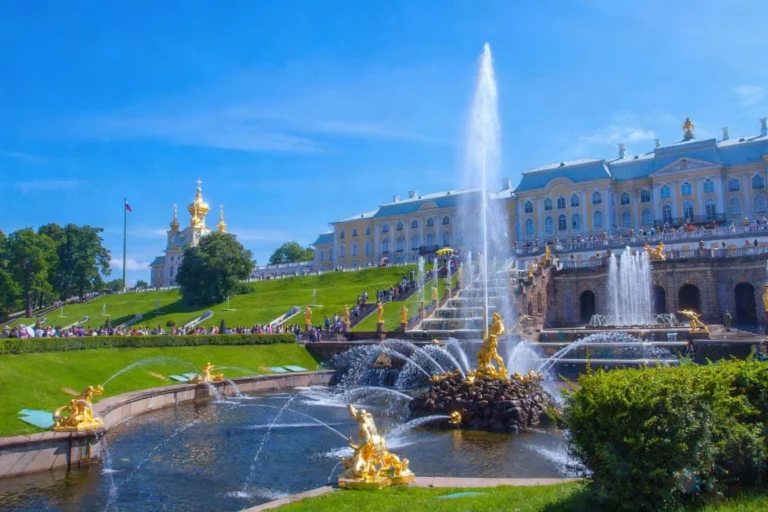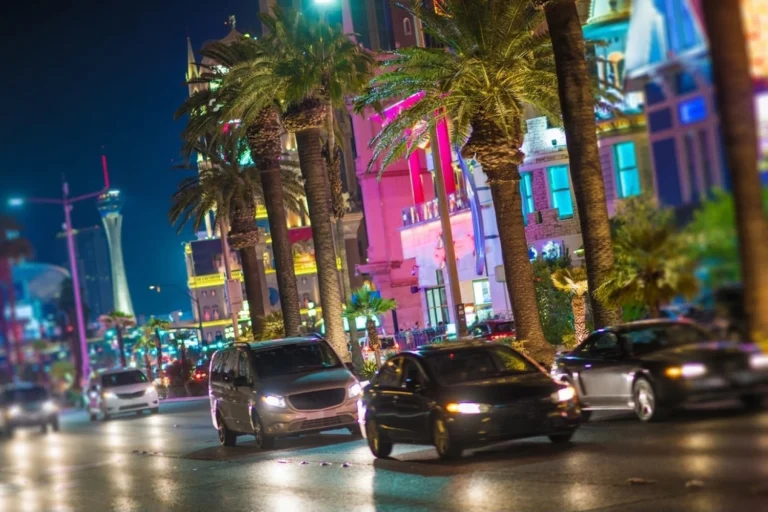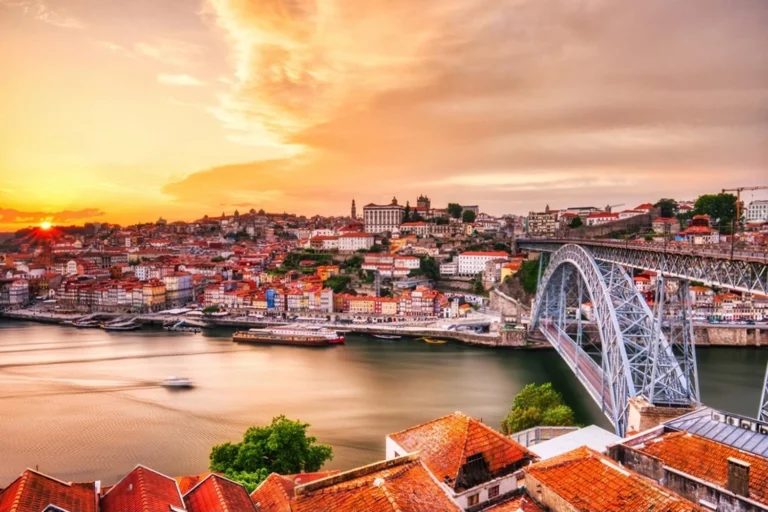Capri: 30 Fascinating Secrets Hidden Behind the Blue Grotto
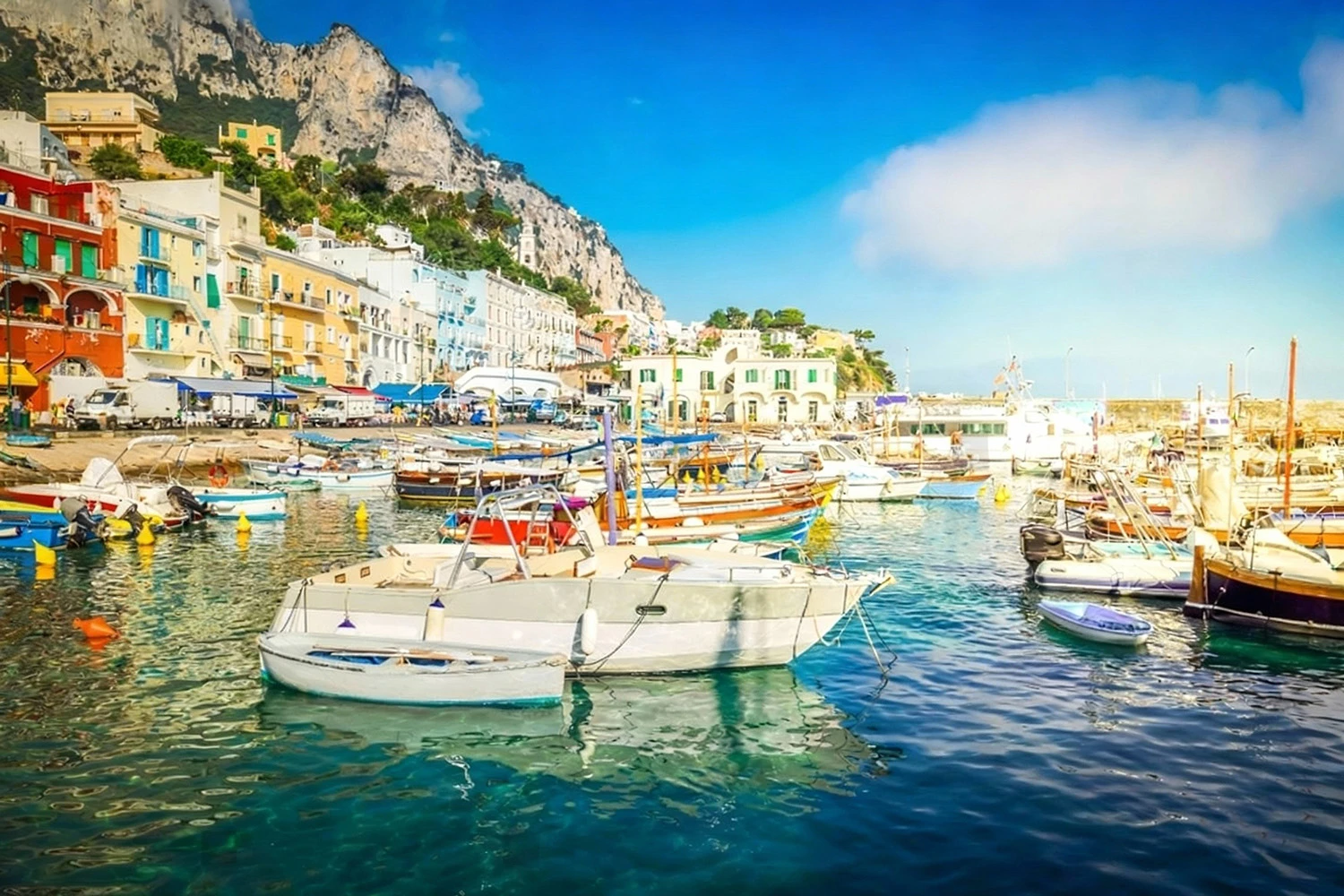
Capri feels like a sigh made of sunlight and salt. The air shimmers with lemon and sea spray, and every narrow path seems to lead somewhere both secret and familiar. Beneath the polished glamour, there’s a quieter soul – the sound of oars against water, the hush of dusk settling over whitewashed walls. Stay long enough, and you’ll feel it too: Capri isn’t just beautiful, it’s a memory that refuses to fade.
An island tugged loose from Italy’s sleeve
I love a simple fact that changes how you look at a place. Millions of years ago, the ground shifted and an island slipped free of the Sorrentine Peninsula; suddenly those chalk white cliffs plunging into turquoise feel less like scenery and more like evidence. In Capri, the limestone lifts in pale walls and the air tastes faintly of salt and stone.
I remember a windy afternoon when waves hammered the cave mouths and a deep rumble traveled through the rock. Thinking about that old separation made the shore feel both fragile and stubborn, the kind of contrast that lingers long after the light softens.
Locals say that when storms pass, you can hear the Earth breathing through the caves a slow rise and fall. I believed them as the gusts settled; the sound felt steadying, the kind of reminder that makes you quiet and grateful to be small.
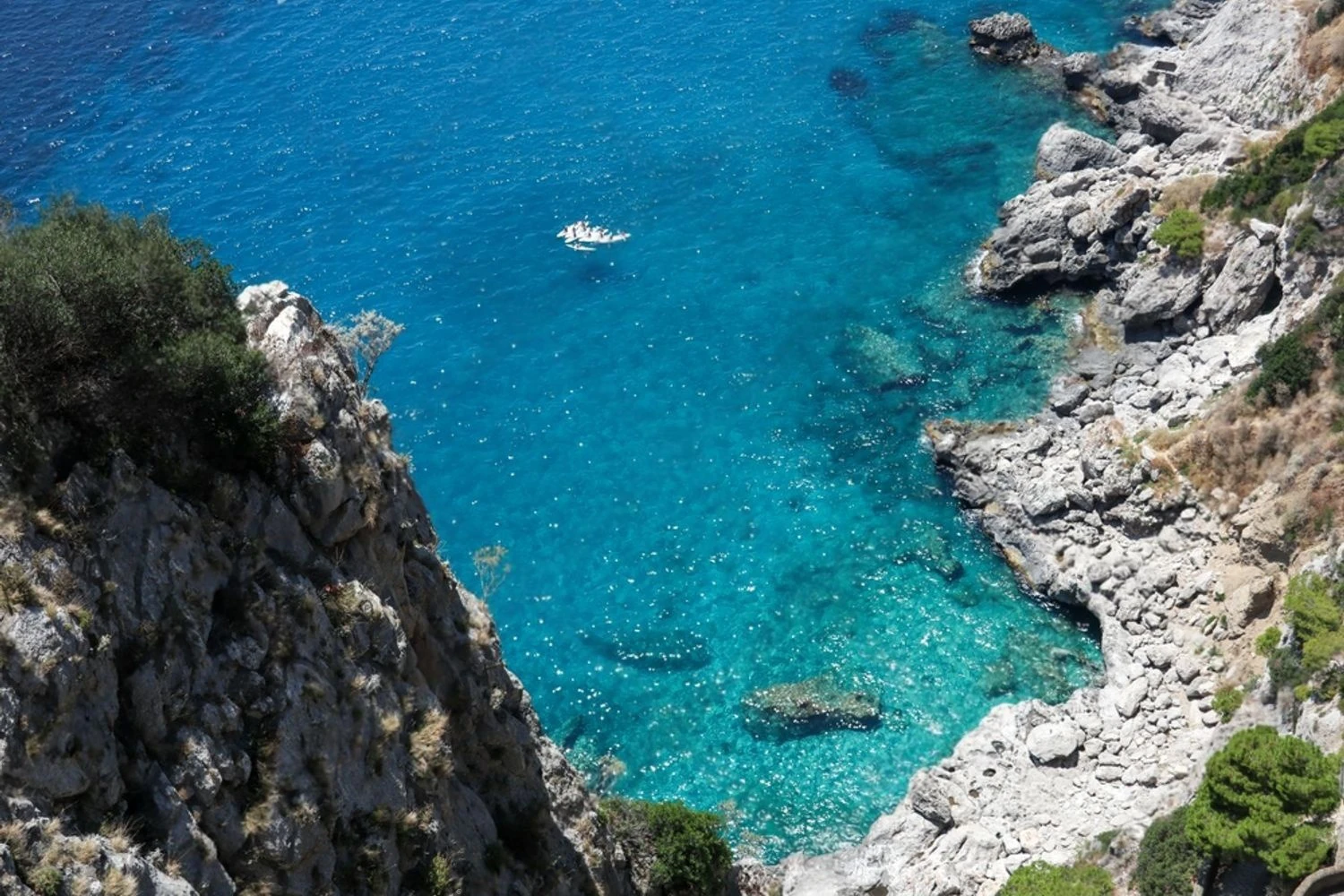
An island named by boars, kept by nimble goats
I smiled the first time a goat picked its way along a limestone ledge, perfectly calm on a strip of rock thinner than my hand. Afternoon sun warmed the stone; there was salt in the breeze and the tick tick of pebbles under hooves. People here say the island’s name comes from kapros, wild boar the Greeks once found herds running free across these cliffs.
Maybe that’s why the place feels stubborn and alive. The goats now seem like a living footnote to that story, sure footed creatures tracing lines up faces no one else will try. That’s what I love about Capri: its name still carries the hoofbeat of an older world.
A mad swap for Capri’s morning light
I love that an emperor once gambled on a sunrise. In 29 BC, Augustus traded a larger island for this rocky perch along the bay a choice people called mad until the cliffs answered for him. He just smiled and raised marble villas toward the east, each one opened to first light.
At dawn the limestone blushes, the air tastes of salt with a whisper of lemon, and the sea turns that soft, glassy green that quiets the mind. I remember standing there and feeling a knot inside me loosen; suddenly his decision made sense, as obvious as breathing.
It’s a kind of wisdom that counts in dawns rather than acres: choose the place that makes morning feel inevitable. Some trades aren’t measured in size or status, only in the steady certainty that light will find your window.
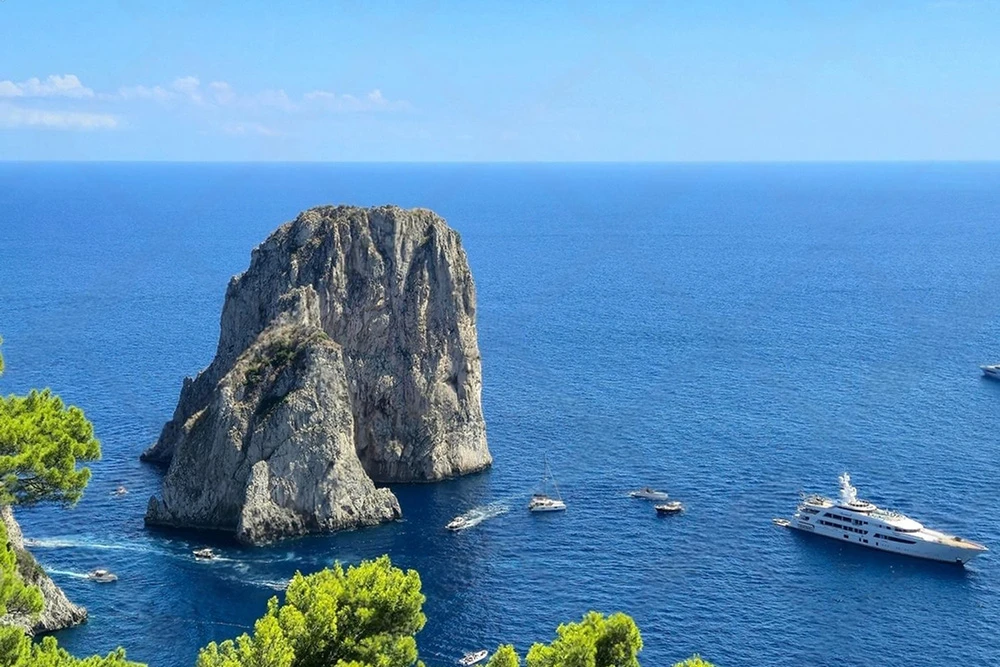
An emperor who chose an island over Rome
Some places quiet you from the inside out; you arrive and the noise of your life finally softens. I get why Tiberius refused to leave Capri. The air is salt sweet, the cliffs pale and sheer, and the water keeps drifting between sapphire and ink. He built twelve villas here, one for each god, a quiet constellation of rooms and courtyards scattered like an altar to the sky.
From those terraces he ruled a world he no longer wanted to step into, sending his orders out by ship for the last decade of his life. The sea was his courier, and if the whispers are true those cliffs his cruel verdict for enemies. I remember standing in the wind and feeling both the hush and the edge of it all, the way beauty can hold power’s shadow without blinking.
Maybe he wasn’t just hiding; maybe he was choosing a different kind of nearness the horizon over the forum, the wind over the roar. It still surprises me that an empire was steered from a balcony above the water, messages timed to sails and weather. And somehow the place still feels both serene and a little sharp, a refuge shaped by beauty and rumor.
When Tiberius’ ghosts meet statues beneath the waves
I remember the wind up there tasting like salt and iron, the cliffs keeping their solemn face. People love to say Tiberius sent the unwanted spinning into the water, and you can almost hear the rumor slick along the stone. Gossip grows like ivy on old walls, quick to cover whatever truth once clung there.
Then came the divers with their slow, shining finds marble hands, a curled lock of a statue’s hair, a cheek the color of wet moonlight. No bones surfaced, only art rising from the blue, and with it the old tale began to loosen.
That’s why the place feels softer to me now. Villa Jovis still sits high above the glitter and the gulls, and the story I carry from that height isn’t pure horror anymore; it’s a mix of power, fear, and beauty that lingers in the stone. It’s surprising, and oddly comforting, to learn that the seabed held statues, not bones.

The cave that went from curse to glow
I remember the hush of water, the air turning mineral cold, and that impossible blue, calm and steady. No wonder fishermen once kept their distance and called it cursed; an eerie glow like that could feel less like water and more like a hidden lantern.
For centuries the shimmer fooled sailors into blaming sea spirits. It wasn’t until the 1800s that explorers showed it was sunlight, bending through an underwater opening and returning to us as blue. The mystery didn’t vanish it just changed shape, from ghost story to physics that still feels like a trick of the heart.
That truth doesn’t dull the wonder; if anything, it makes the place feel more generous. The Blue Grotto on Capri carries both the shiver of old superstition and the clarity of science, and I love how those two can sit together in one small hollow in the sea. It reminds me that fear sometimes marks the doorway to beauty, waiting for someone to name the light.
A hidden grotto becomes Cybele’s quiet temple
It felt strange tender, even that a grotto could hold a goddess. The air was cool and mineral, the kind of hush that settles on your skin, and I could almost see the Romans keeping this cave as a private temple for Cybele, fertility’s fierce, life spilling mother. It softened the space, turned the rough stone into something that listened.
Along the walls, niches cut into the rock sit like cupped hands; once they cradled votive offerings, little promises left in the dark. Outside Rome, that’s what moved me most: how faith doesn’t always stand on marble steps it can move like underground water, hiding inside beauty and surfacing wherever people are brave enough to hope. I remember thinking belief needs only a small ledge to rest, and this grotto, even empty, still holds that quiet human warmth.
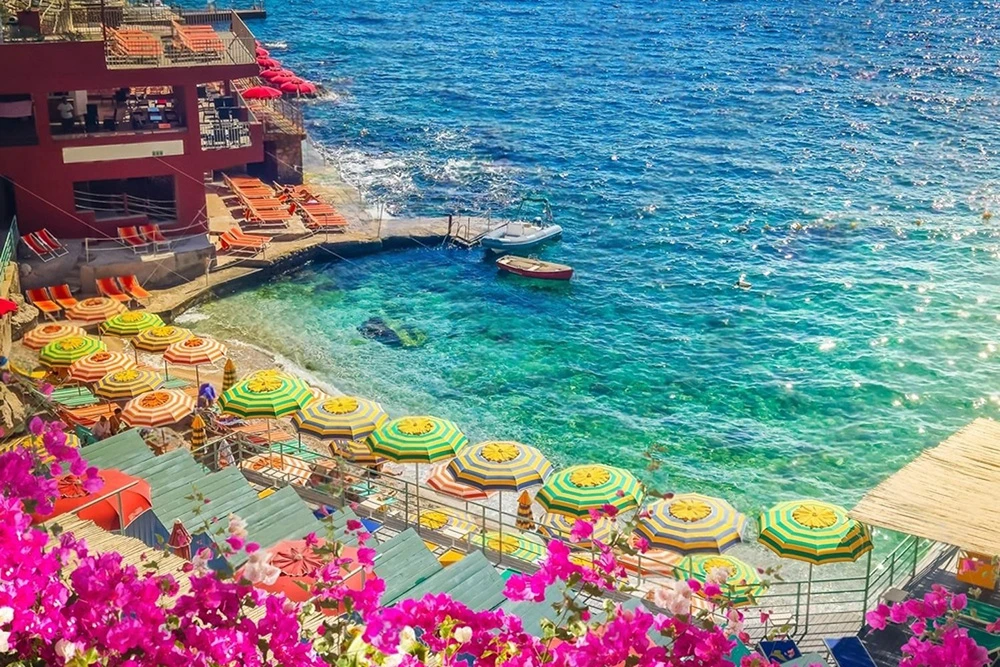
An island that stands on mainland bones
Funny how the ground felt steady while the sea kept stealing the edges of the world. The wind tasted of salt and lemons, the limestone warm underfoot, and on Capri everything seemed to exhale gulls wheeling, waves working patiently at the caves. It felt less like an island and more like a knuckle of the continent still clenched against the blue.
Later I learned it isn’t really an island at all, but a massive limestone monolith, a leftover piece of mainland rock the waves have been carving for ages. Maybe that’s why your feet trust it, even as the horizon slips away; the place carries an anchor in its bones. I remember thinking how that quiet certainty leaks into you too: thoughts uncoil, time softens, and you feel held rather than adrift.
From Monte Solaro, two volcanoes share the horizon.
There’s a hush at the top that settles in your chest. Up on Monte Solaro, Capri’s highest point, almost 2,000 feet above the water, the world feels like a balcony hung from the sky. On the clearest days the air turns glass fine, and there they are: Vesuvius to the north and Etna far down in Sicily, two sleeping cousins that shaped the edges of this coast.
Standing there, the names on the map suddenly feel close. The sea smells clean, pine resin drifts on the breeze, and the rocks are warm under your palm. It’s quietly moving to realize that the calm line of those volcanoes once carved the bays and terraces we love; I remember feeling small in the best way, simply glad to be there and to feel how much time made this view.
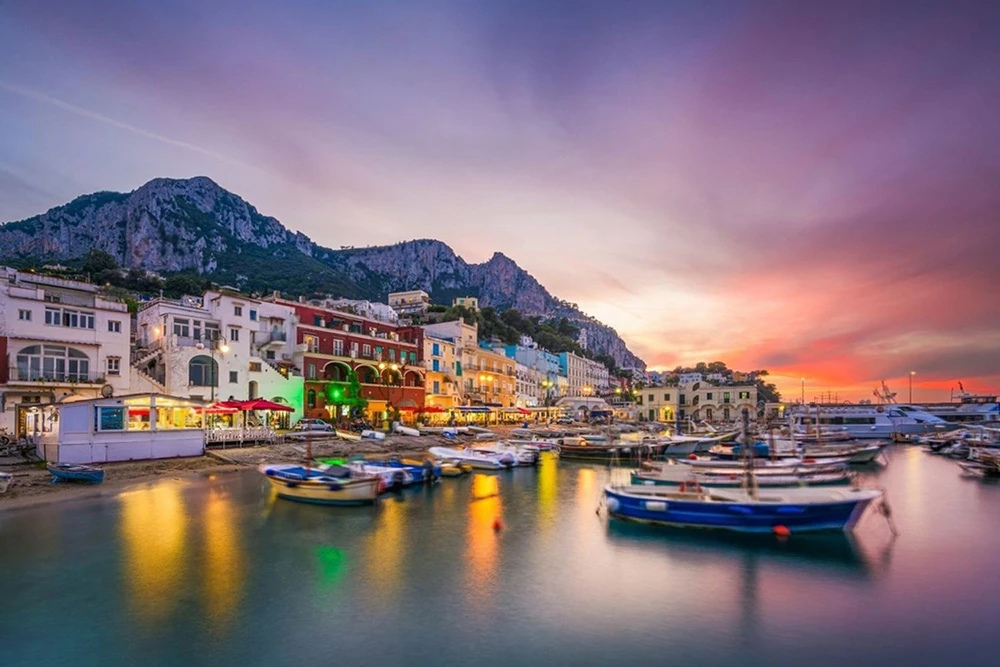
Lovers turned to stone, luck in a single honk
I didn’t expect rocks to feel romantic. The breeze was salty, the sun skipped on the water, and three stone sentinels rose ahead of us the Faraglioni. Their names fall softly: Stella, Mezzo, Scopolo. People say jealous gods once froze three lovers here, and the island learned to keep their story.
Here in Capri, captains still tap the horn once when sliding through Mezzo’s arch, a small wish for luck in love. The sound spreads across the bay and returns gentle. I remember a hush settling, gulls wheeling in the glare and the swell curling past the rocks.
It surprised me how that single note made the morning feel braver; suddenly everyone seemed to be rooting for someone’s heart. Maybe that’s why they seem tender despite their size: the story has been worn by salt and time until it sits lightly on the air.
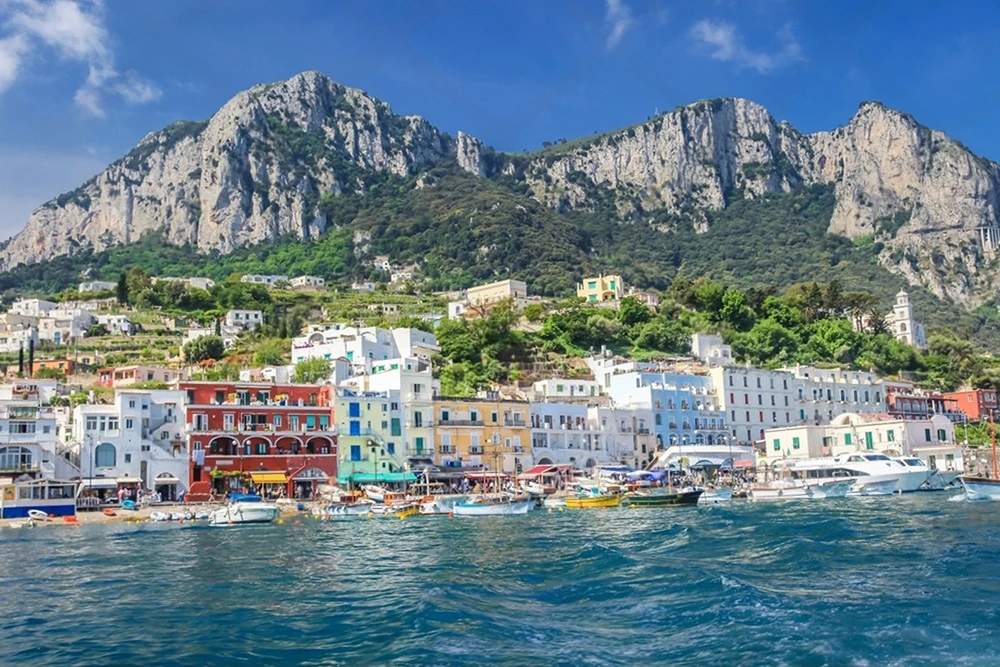
A sapphire lizard found only on Capri’s Faraglioni
I swear that blue didn’t look real. In the hard white glare of noon, a tiny lizard flickered over limestone and suddenly everything around it seemed muted – the sea, the sky, even the chatter of gulls – while its skin shimmered like crushed sapphire. The air tasted of salt and warm stone, and for a moment I forgot the world had other colors at all. They say this little creature lives nowhere else on Earth, tucked into those sea bitten rocks off Capri.
Island folklore whispers that it’s the spirit of a drowned sailor, rewarded with eternal color. Maybe it’s just a story, but standing there, I remember thinking how tenderness often hides in the sharpest places. That electric blue felt like a small mercy from the water – a quiet reminder that even losses can leave behind something luminous, something that chooses to stay.
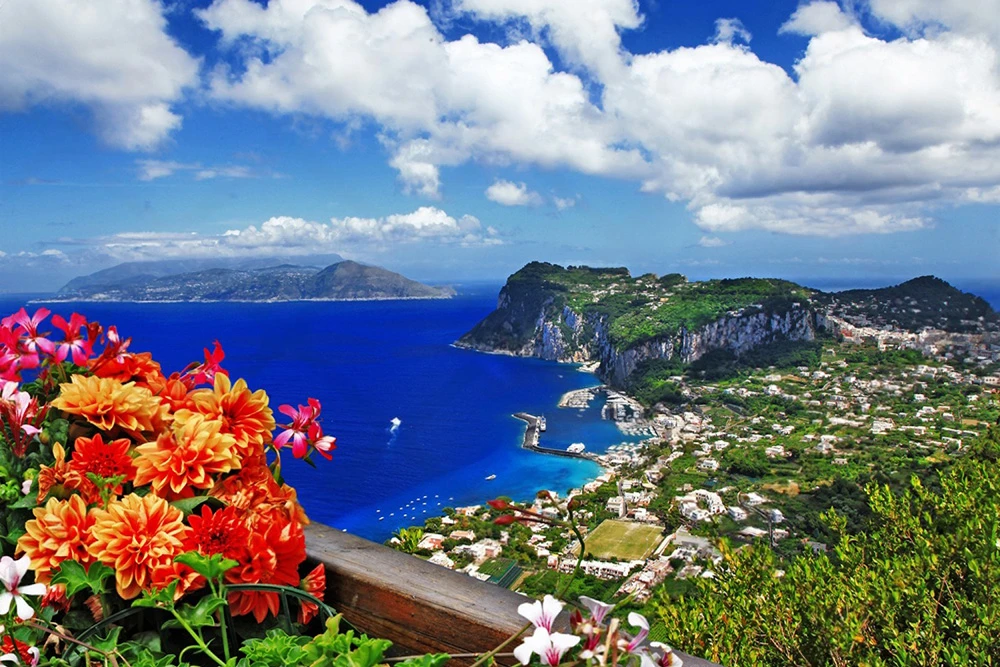
A thousand steps between sky and harbor
It’s the kind of place where your voice drops without trying. In Anacapri, the Phoenician Steps zigzag down the cliff in nearly a thousand worn slabs, a stone ladder between sky and sea. The wind smells of salt and lemon leaves, and the sun lifts a pale glare off the rock. I remember thinking how a simple path could hold so many days, stacked one on another.
Greek settlers carved this switchback and, for generations, barefoot traders took it morning after morning, moving between the hilltop life and the harbor’s bustle. I love that their daily commute wasn’t a road at all just steps, ordinary and patient, built for bread, fish, news, and fatigue moving in both directions. It feels tenderly human, the way effort turns into habit and habit turns into meaning. Standing there, I didn’t feel higher or lower, just quietly connected to the same route that once served boats below and kitchens and courtyards above.
A scarlet house that argues with the sea
It stopped me mid thought the way some places do when the Belvedere di Tragara, tucked beyond Via Camerelle, framed a shock of red against the blue. Villa Malaparte sits there like a red slash on the cliff, the sun turning its terracotta skin warm as a shoulder. The air tastes of salt and pine, and that rooftop staircase spirals into the sky, a quiet dare written in concrete.
A rebellious writer made it both a home and a manifesto, and you can feel the stubborn beauty of that choice; Capri has a way of making defiance look elegant. No wonder the house has wandered into films, poems, even surrealist dreams it carries an idea more than an address. I remember thinking how honest it seemed, as if the place were saying: here I am, exactly as I mean to be. Somehow that felt like permission, the kind you tuck away for days when you need a little brave.

Where emperors kept beasts, bougainvillea keeps their secrets.
Funny how a place can soften with time. Heat shimmers, salt and lemon hang in the air, and bougainvillea spills like a velvet curtain over the terraces. It’s wild to remember that this calm garden was once the emperor’s private courtyard, filled with exotic animals and marble statues.
Now people drift past, smiling at themselves, unaware that lions once dozed in this shade. I felt a small shiver of tenderness, as if the stones had traded their stern posture for a shrug. It’s imperial ambition gone floral, the power notes dissolved into petals and birdsong.
The Gardens of Augustus have a way of turning sharp stories soft. I remember brushing a fallen petal from my sleeve and realizing how lucky it is when a place outgrows its power and settles into beauty. You leave lighter, with birds chattering above and the sea below.

A magnate’s serpent path to the sea
I remember blinking at those hairpin bends, convinced no one would dare draw lines that sharp on a cliff. Sun bounced off pale rock, the air tasted faintly of salt, and below the water shifted, bright and restless. It felt like the mountain was holding its breath while the path tried to outsmart gravity.
Only later did I learn it wasn’t a city plan at all but a shortcut ordered by a German steel magnate, impatient for the water at his doorstep. On Capri, that kind of ambition somehow fits the island has always paired polished elegance with raw stone. The path doesn’t just zig and zag; it stitches the cliff to the sea in neat, dizzying seams.
Locals grin and call it a serpent carved into stone by hand, and honestly, that’s exactly how it looks. I still think about that: how one person’s urgency became everyone’s astonishment, how a private need turned into a public thrill. Standing there, it felt like proof that beauty can come from unlikely motives practical, a bit arrogant, and somehow generous in the end.

Sirens’ bay tucked beneath Via Krupp’s cliffs
There’s a hush before sunrise when the sea seems to hold its breath. Down beneath the zigzags of Via Krupp, Marina Piccola curls into the rock – a former smugglers’ cove where fishermen still swear the sirens warm up their voices on silent dawns, letting a few notes slip so they echo off the cliffs. The air smells of salt and citrus, the water turned glassy and pale, and for a moment Capri feels older than its postcards, older than any of us.
Homer called this the bay of the sirens, and you can see why; even if you don’t believe in the old stories, something in that echo loosens the practical parts of you. I remember not asking for proof, just listening with the kind of attention you save for good news, and feeling the cliffs keep their old secrets with a patient calm. Maybe that’s the spell here: smuggling and song, danger and beauty, living together in one small curve of shore, a reminder that wonder often waits just below the obvious path.
The upper twin that still weaves
I remember how the island’s noise softened as the sky opened, and the chatter of shopfronts thinned to the tap tap of a cobbler’s hammer. People here joke with a shrugging smile, “Capri sells dresses, the upper town weaves them,” and it lands like a gentle secret passed between friends.
They call it Anacapri – literally the upper Capri – and the altitude feels like a deep breath. Leather smells warm and sweet in tiny sandal workshops; buckles wink in sunstripes on the floor. In a quiet courtyard, cool tiles bloom with painted lemons as powdered glaze lifts in the light. Coral beads glint in a palm like small bursts of dusk, strung one by patient one.
What lingers isn’t the postcard view but the unhurried rhythm of hands making useful beauty. Down below it sparkles; up here it settles, steady and hand stitched. You leave with something small, yes, and also the echo of that joke – a reminder that some places are still made, not marketed.
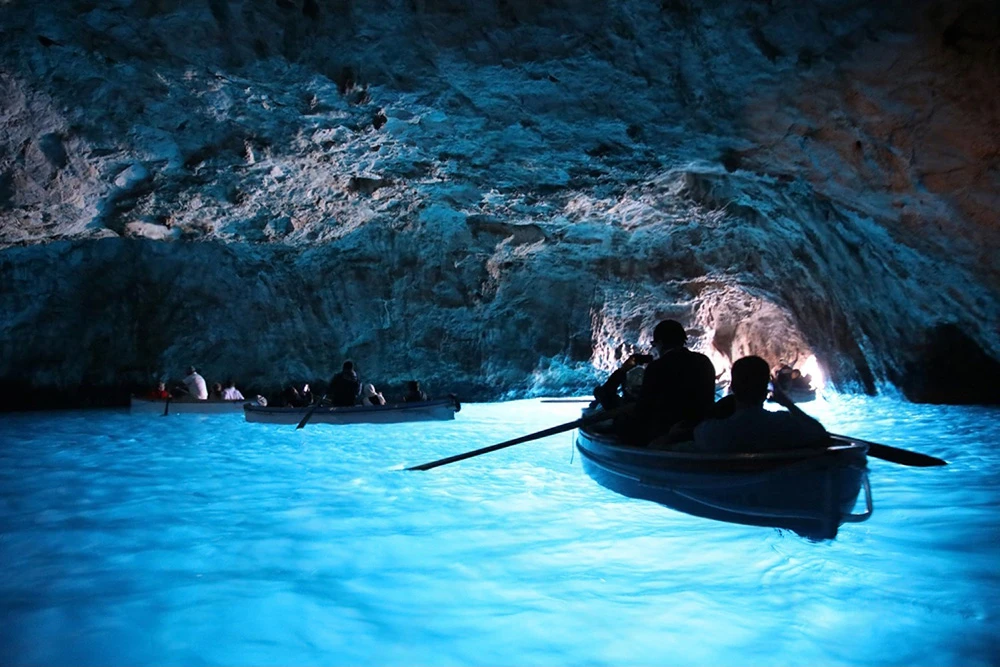
A silent sphinx, a doctor, and an old secret
I remember rounding a sun warmed balustrade and finding her the stone sphinx perched where the air tastes of salt and lemon. She stares past the cliffs toward Naples, unblinking, like a lighthouse without a light. No one can say how old she is, and the uncertainty feels gentle rather than heavy, the kind of mystery that makes you lower your voice without meaning to.
Axel Munthe, the Swedish doctor who built Villa San Michele on Capri, set his home atop ancient Roman ruins, layers of time like pages you can read by touch. He teased that he buried something beneath her paws, and I love that he never explained; it keeps the place human curious, generous, a bit mischievous. Standing there, I felt that some secrets are better left to face the horizon for us, reminding us that wonder doesn’t need an answer to feel true.
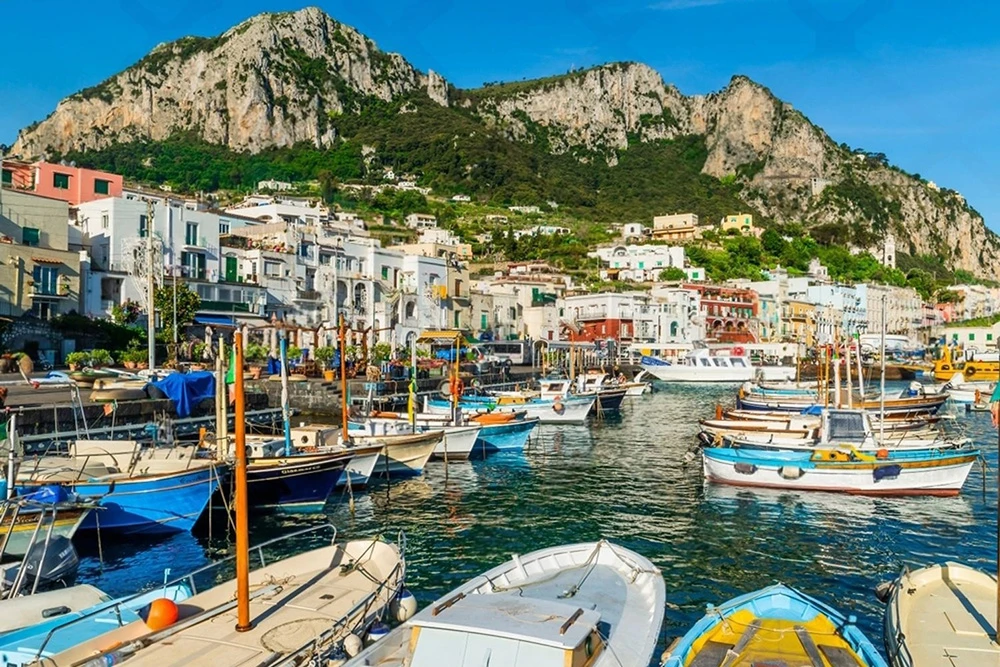
When silence learns to sing in marble cloisters
It caught me off guard the way an accordion slipped through the cloisters, thin and warm as late sun. The sound drifted around the arches of Capri’s Certosa di San Giacomo and settled into the corners. The marble was cool, the air a little salty, and everything softened at dusk. I remember thinking how tender it felt to hear something so human in a place made for quiet.
Someone once told me the monks here were forbidden to speak, so they learned to pray with sound. I love that how music didn’t break the silence, it carried it, like a small lantern inside the dark. Even now the corridors hum at evening, not loud, just enough to remind you that devotion has many shapes. I found myself still listening long after the last note faded.
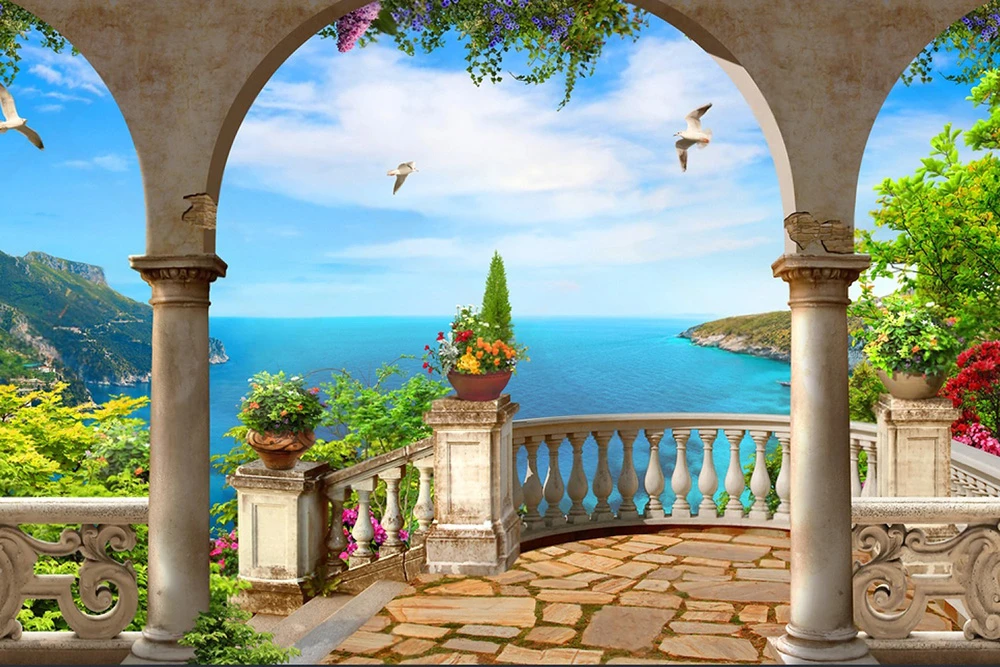
When the sea taught glamour to breathe
I love how some places teach you what elegance really means. In the 1950s, the island turned into a soft lit stage, and the cast just happened to be Liz Taylor slipping into secret coves, Brigitte Bardot dancing barefoot across sun warmed piazzas, and Jackie Kennedy finding a clean, clever line in a pair of cropped trousers. The air would have tasted of salt and lemon peel, a little vinyl crackle drifting from a café, sandals tapping time on stone.
They called it the Hollywood of the Tyrrhenian Sea, but Capri makes it feel human glamour that’s close, easy, and unbuttoned. That’s what I adore about those simple cropped pants: style born from comfort and daylight, made for sun warmed steps more than for rules. Even now, you can sense a gentle confidence there, the quiet permission to be effortless and a little sun dazed, bright in your own skin.
Moonlit lemons and the ritual heart of limoncello
I remember the first sip arriving in a tiny chilled cup, perfume of lemon oils rising before the glass even touched my lip. The first taste felt like sunlight finding the back of my tongue bright, warm, a little mischievous. People here have been perfecting this gold for generations, guarding recipes like lullabies. Some still set jars of peels outside to steep beneath the moon, swearing the night’s glow coaxes out a sweeter spirit; the moon is their quiet chef, patient and exacting.
Along the Amalfi Coast, a homemade limoncello after dinner isn’t a habit, it’s a handshake from the house. If someone offers you their own, sip slowly and let it rest on the palate; you’re tasting time, weather, and all the hands that waited. I love how the sweetness lingers while the sea air sneaks in through the window, and everyone talks a little softer. It’s more ceremony than cocktail something you honor, and in doing so, it quietly honors you back.

Pirates beneath the island’s glossy surface
Funny how the clink of spritz glasses can drown out older echoes. On the quay, you smell orange peel and salt, hear gulls and the low hum of engines, and it all feels so modern, so easy.
But the coves there are so many were once a map for corsairs in the 16th century, pockets stitched into the coast where ships could disappear. Long before any Aperol, Capri was a lookout and a hiding place, and you can almost hear the faint creak of wood in the chop.
Locals say treasure is sleeping under the seabed of the main harbor, watched by ghost ships that drift out when fog slips in. Once, waiting for an early boat, I saw the water go gray and still and felt that small, electric hush of being near an old secret. It made me love the place more: the glamour on top, sure, but beneath it a steady pulse of salt and memory that refuses to be polished away.
The world’s living room on a sunlit island
I remember the clink of tiny spoons and sun warmed stone under my elbows, everyone leaning in over espresso as if we’d known each other for years. A fisherman’s hands, still smelling faintly of salt, rested near a glossy magazine; a poet mumbled a line into the rim of a cup while a billionaire’s watch flashed like a wink. Somehow it felt perfectly normal, the mix of linen and work clothes, sea and perfume, all threaded together by the same dark, sweet sip.
In Capri they call this piazza 'o Salotto del Mondo – the world’s living room – and it fits, because stories seem to move faster than the breeze that stirs the lemon leaves above the lanes. What surprised me wasn’t the glamour but the ease of it all, how a crowd softened into community in the time it takes for crema to settle. I left with the warm fizz of caffeine and the steadier feeling that, for a moment, the world remembered how to sit shoulder to shoulder and listen.
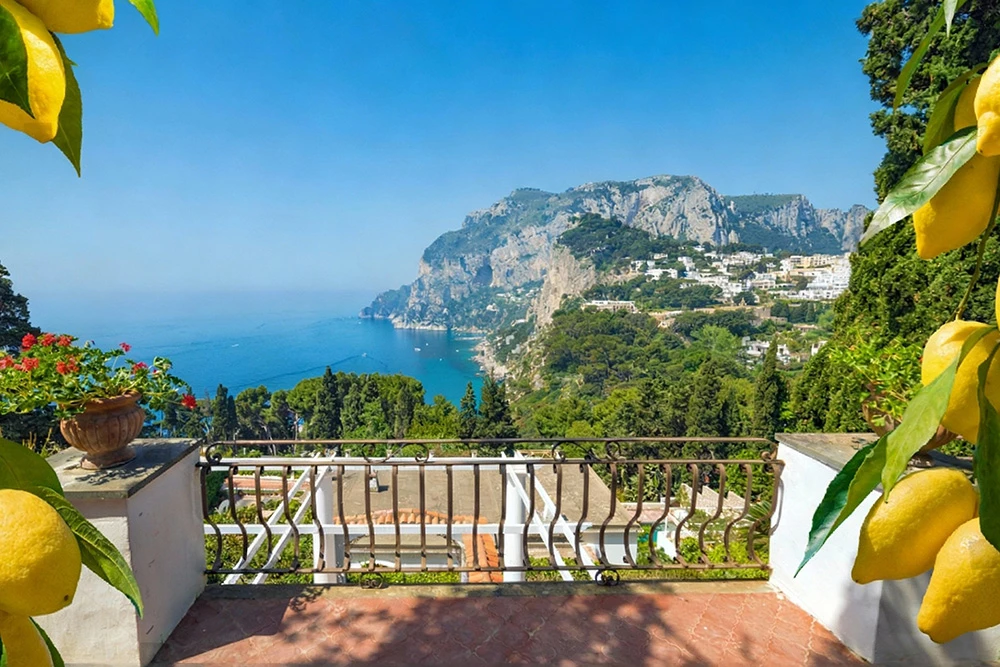
Beneath polished boutiques, Capri keeps a hush of catacombs
Funny how a place can gleam so brightly and still keep a secret. The shopfronts glitter with silk and leather, bells trickle from the square, and somewhere under the Church of Santo Stefano there’s a cool seam of stone and silence, a hidden corridor of the island’s early Christian past. It feels like a secret pocket sewn into a velvet jacket close to the skin, yet mostly unseen.
The priests say martyrs once found shelter there; archaeologists, with their careful patience, haven’t pinned down the proof. I remember the way that story hung in the air like candle smoke, soft and a little stubborn. Even just imagining the chalk dust chill, the low echo of steps, made the sunny streets above feel suddenly tender, as if the cobbles were listening.
Maybe that’s the charm here: a place famous for luxury cradling a rumor of courage, letting faith and fashion share the same address. It made me think of time folded neatly beneath the day, like layers of linen in a drawer near enough to touch, whether or not anyone signs off on the legend.
Italy’s flag, quietly plated on an island table.
Funny how something so simple can feel like a salute. I remember the first time I learned the caprese wasn’t invented to charm visitors, but to nod to Italy itself – tomato, mozzarella, basil set down like a quiet parade on a plate. The tomato was sun warm and sweet, the mozzarella cool and tender, the basil releasing that little green breath that smells like noon in a garden.
On Capri, that small idea carries a gentle weight: the colors line up like the flag, yet nothing about it shouts. It’s a patriotic plate made of everyday kindness, a three note summer anthem you can taste. I love how it says pride can be humble – just freshness, a pinch of salt, and the feeling that you’re at a table that seems to belong to everyone.

Old coin wishes in the nymphs’ sea caves
It still charms me that coins once belonged to the sea. In the grotte di ninfe those little caves pocked into pale limestone people used to leave small offerings to the water nymphs, asking for gentle waves and an easy passage. You can hear the tide mutter in there, the air cool and briny, droplets ticking from the ceiling while the sea breathes in its sleep. Long before tourists made wishes to fountains, the hope was spoken into rock and water, and it feels somehow truer.
I remember touching the damp wall and thinking how many prayers salt can hold. On Capri, the superstition sounded more like good manners: a quiet nod to a living sea, a promise to travel kindly. Not glitter or spectacle, just a coin’s soft weight little suns tucked into the dark to steady a horizon and steady your heart.
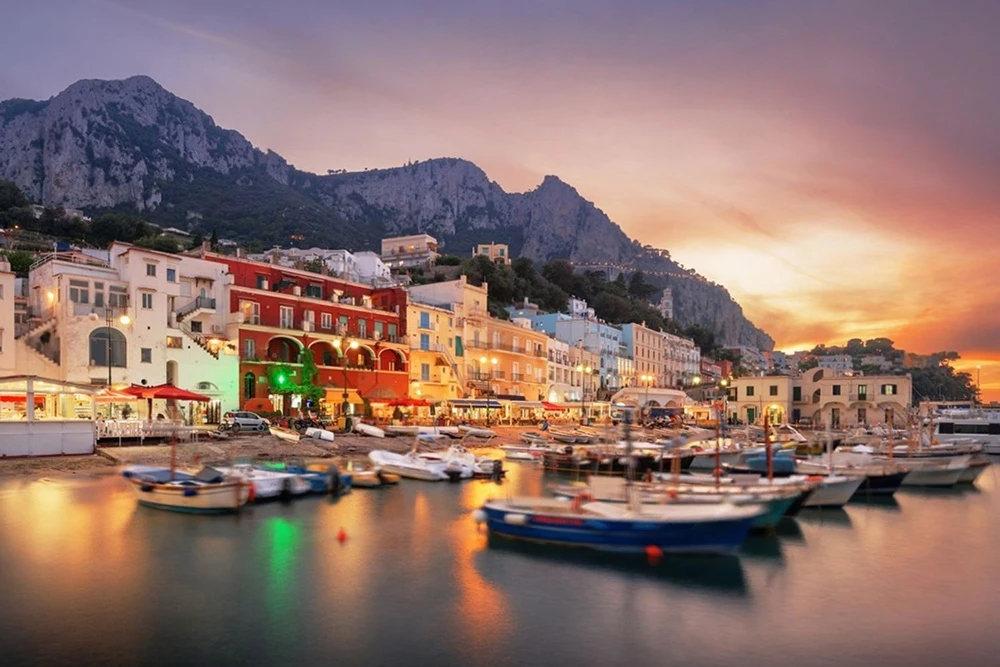
Winter bonfires to cleanse what lingers unseen
The cold nipped at my knuckles, but the piazza glowed like a held breath wood crackling, resin sweet in the air, a wind off the sea threading smoke through the night. Sparks rose like tiny prayers, and faces gathered in a loose ring around the flames, cheeks gilded orange, eyes soft and quiet. It looked charming at first, the way winter can look gentle from a warm window.
Then someone murmured Sant’Antonio Abate, and the mood shifted in me. Outsiders might call it quaint, but the locals call it a cleansing, a way to burn away what the year left behind the bad luck, the little fears that stick to you. You feel it in the silence between laughs, in the steady feeding of branches to the fire, a ritual older than any schedule, content to speak in smoke and ash instead of speeches.
On Sardinia, the fire felt like a small sun in the square, and I remember thinking how good it is when a place teaches you how to let go. Children’s laughter skimmed along the edge of the light, elders watched with a knowing calm, and somewhere inside me a knot loosened. I went to sleep with my hair smelling of woodsmoke and salt, and woke lighter, as if the night had done a bit of gentle housekeeping on my heart.
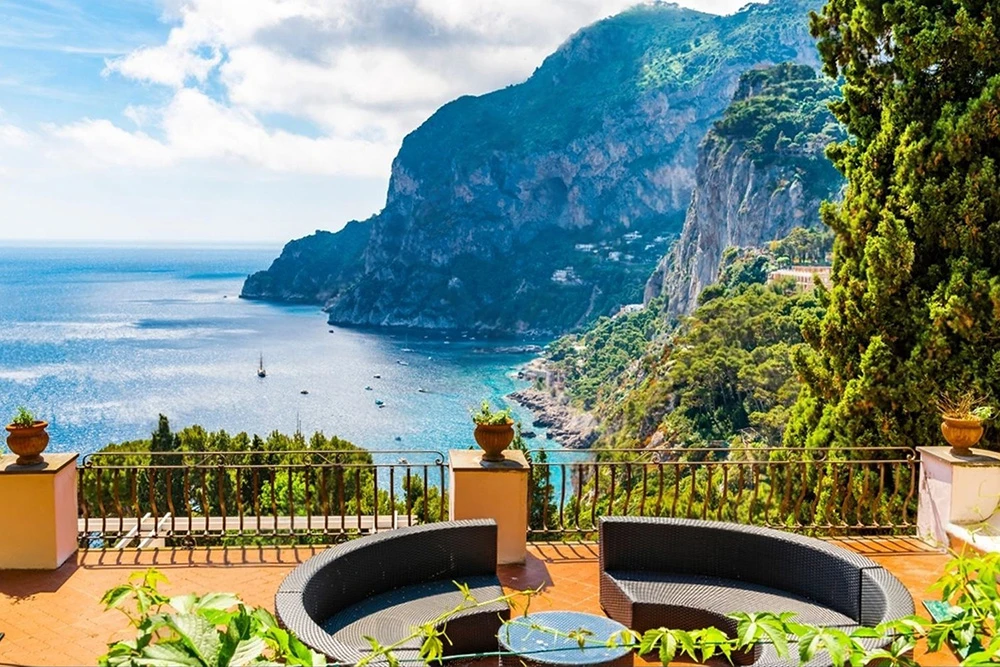
A silent chairlift into the island’s high hush
I didn’t expect silence to feel this alive. The world below falls away, and there’s only faint citrus in the air and the soft brush of wind on your cheek. Clouds glide past, thin and close, and you start to breathe at their pace.
On the chair up Monte Solaro, there’s no music, no chatter just a kind of patient reverence, and the seat feels like a tiny pew suspended in the open. Lemon groves drift beneath with their clean, sun warmed scent, and I realize how rare it is to be carried by nothing but quiet.
At the top, I always want to take my time, because the sky looks newly washed, almost holy in its simplicity. It leaves me softer, and I carry that hush with me long after the island is out of sight.
https://en.wikipedia.org/wiki/Capri
Where Neruda found exile and love among hibiscus
It’s strange how a place can hold a heartbeat you didn’t expect. He was exiled here in 1952, and somehow still called the island “a woman made of rock and seafoam,” like he’d found tenderness folded into cliffs and salt. I remember the air carrying that light sweetness of hibiscus and the faint bite of the sea, the kind of scent that makes you soften your voice without knowing why. The sun presses gently on your shoulders, cicadas knit a steady hum, and the shadows feel patient as if they’ve learned to wait for words.
There’s a small villa hidden behind hibiscus trees where he wrote love poems, and the idea of it lingers long after you’ve moved on, like a note still ringing. Capri only needs to be said once for the mood to arrive: terracotta warming underfoot, shutters half closed to the glittering afternoon, a breeze slipping through like a quiet friend. I like to think his lines still float there, light and salt kissed, proof that even in exile, a place can make room for tenderness and give a restless soul somewhere soft to land.
Capri is a feeling, not a checklist
At first I thought it was just a pretty island, and then someone said the island chooses you. In Capri, that somehow made sense: lemon scented shade drifting over white walls, a cool hush from small chapels where marble saints line a doorway, salt in the air and that slow, blue light. Give it a minute and it moves through you like a low tide loosening knots you didn’t know you were carrying.
Arrive in a rush and everything feels loud and bright, the views blur and don’t quite land, and you go away a little restless. Linger under the lemon trees and the place matches your pace; bells, a soft breeze, and the clink of cups settle into a calm rhythm. That’s the secret locals mean: not something to see so much as a feeling that settles in, a quiet chord you keep hearing long after the boat pulls away.
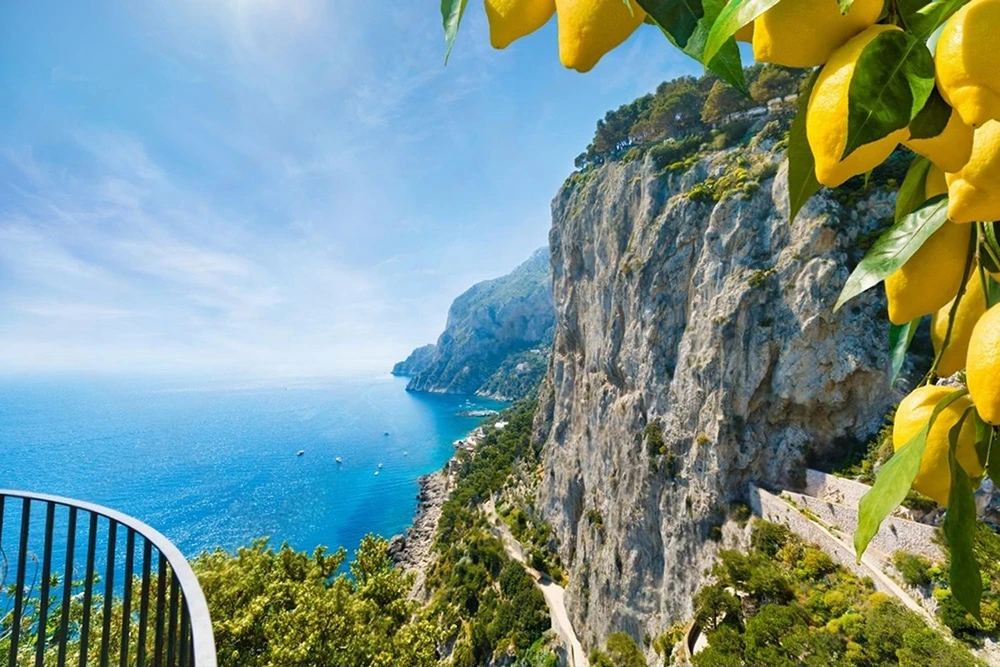
Final thought
In the end, it’s the quiet gestures that reveal the real Capri – the scent of lemons carried on the wind, the sound of waves brushing the rocks, the slow conversations that stretch into twilight. Beneath its beauty and glamour, there’s a softness that feels timeless, like light resting on the sea. Capri isn’t just a place to see; it’s a feeling that settles gently in you. And long after you’ve gone, it stays – calm, bright, and endlessly alive, like the horizon it calls home.
